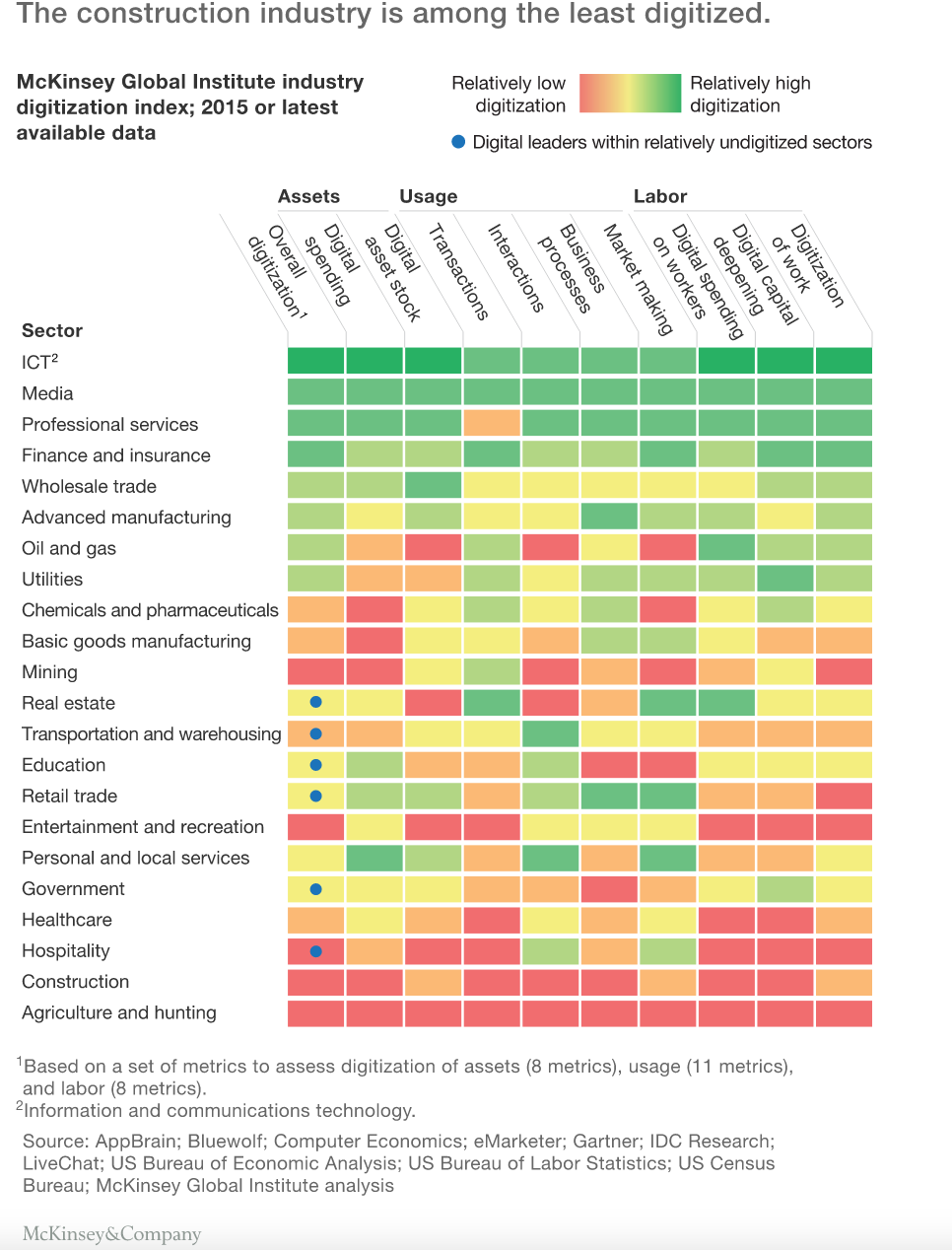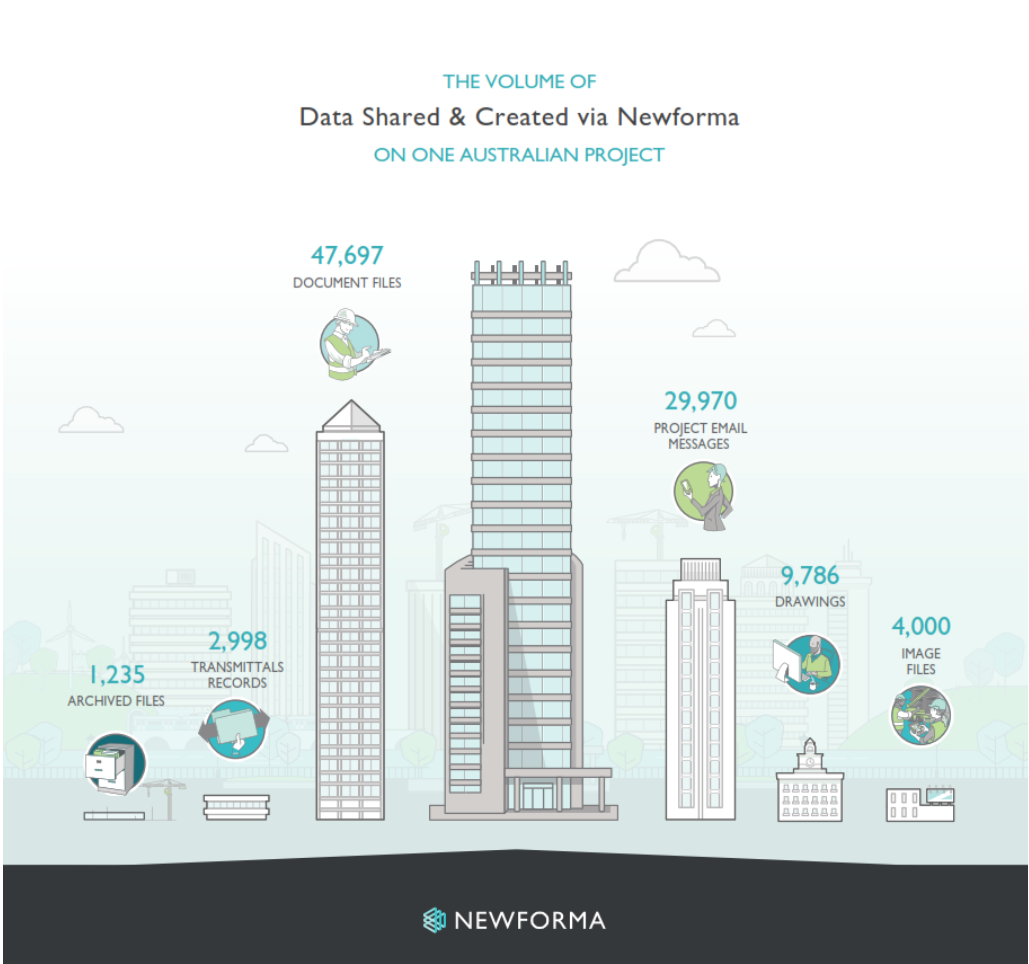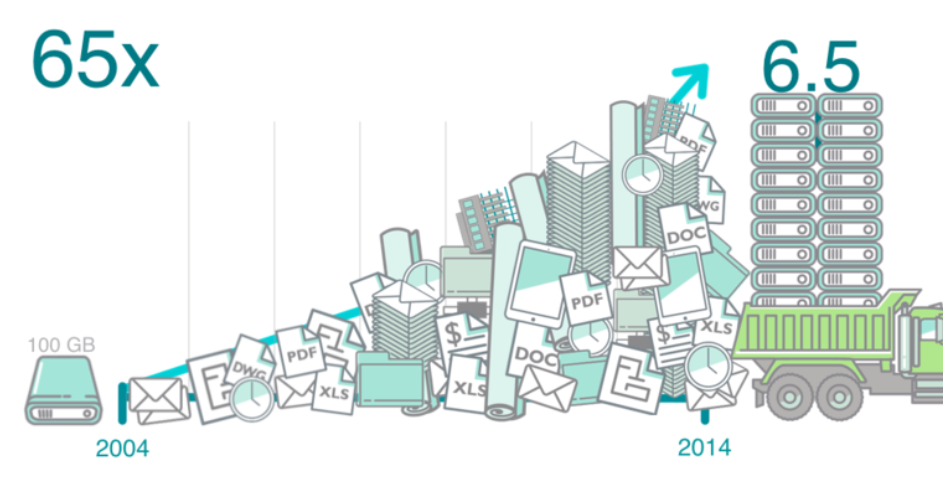Opinion: Ad-Hoc Information Management Strategy Isn't Enough In Digital Age
TUD+ MEMBER CONTENTBy Ian Howell, Newforma
Today’s construction, engineering and architecture projects are generating data at an exponential rate.
From design drawings and BIM models to meeting minutes, transmittals and change orders, there’s a never ending stream of email-clogging information created in the course of designing and constructing a building or facility.
With so much data to manage and multi-million dollar projects on the line, you would expect the construction sector to be major adopters of technology that could help reduce risks and increase efficiency. But as a recent McKinsey report shows, the construction industry ranks second lowest in terms of digitisation across the globe, above only agriculture and hunting.
In Australia, the construction sector consistently ranks in the bottom three innovative industries. Recent ABS data reveals that only a third of construction businesses could be classed as ‘innovation-active’.
In many ways, it’s surprising that a sector worth $300 billion a year to the economy, making up between 8-10 per cent of annual GDP and which employs about the same percentage of Australians, hasn’t placed more emphasis on investment in technologies and processes to improve accuracy, efficiency and productivity.

Manage information to manage risk
From builders on the job-site, to architects and engineers collaborating across geographically disperse project teams - the process of designing, managing and executing complex construction projects requires more careful planning and coordination than ever before.
Projects must run to strict deadlines, with errors, rework and cost overruns quickly eating into a contractor’s slim operating margins.
Just consider the consequences of beginning work on a superseded version of a drawing or specification.
If the errors are identified early, the damage may be limited to a few days of lost time, but if not, far more could be at stake - especially given the industry’s culture of disputes and litigation.
The need for a clear audit trail to facilitate issue resolution, protect against errors and avoid disputes and prevent future litigation has added further complexity to the information management conundrum.
Contractors and owners increasingly demand visibility and access to every item of information generated across the entire project team throughout the project delivery process.
For example, it’s now standard practice for the foreman on Victorian developer/construction company Stemcon’s, worksites to capture detailed photographs of the build progress each morning during site inspection. These images are then filed through Newforma so they’re accessible to the management team in head office instantly and provide a detailed visual record of progress to date.
The need for complete and searchable project information goes beyond those immediately involved in the design and build phase of a project. It extends to facilities managers conducting maintenance once the facility is up and running, and even the lawyers investigating claims ten or more years down the track.

The productivity drain
If information is not managed effectively from the start of a project, it can quickly become a real productivity killer. A McKinsey productivity study found that workers spend around 20 per cent of their working week, or an entire workday, searching for and gathering information.
Too often the default strategy for project information management has been to leave it to individuals to manage themselves using whatever office applications, software and filing applications that are at hand.
Or in some cases, the last resort is to manually inspect storage boxes of archived paper records.
This ad hoc approach is clearly insufficient to managing the explosion in data and opens up a new range of problems. Allowing employees to independently manage information in their own silos can result in serious issues when it comes to accountability and visibility into projects for senior management. A lack of process can also expose a business to regulatory and legal consequences.
Poor project information management means that critical corporate and project knowledge can easily be lost. As employees leave a project or the firm and new team members join, it’s critical to ensure vital information and knowledge is retained and the consolidated history of a project is kept intact.

Why you need a new information management strategy
Proactive management of information has become a critical success factor for every business in the digitally connected world. And in Australia’s increasingly competitive construction market, business leaders are beginning to recognise the value of unlocking project data in a systematic way.
In the last 12-18 months we’ve seen many Australian developers, engineers and designers respond to increases in labour costs and regulation by looking for innovative ways to streamline processes and minimise risk with technology.
While business leaders may recognise the need for a consistent information management process, it remains a daunting challenge for the CIO tasked with managing multiple information streams flowing into an ever-rising reservoir of project data.
And the tide is rising quickly. The average amount of digital data generated by a typical large design and construction project today is 6.5 terabytes - 65 times greater than the 100 gigabyte average for a similar project just ten years ago.
The backbone of any successful project information management strategy is the ability to index, search and manage these vast volumes of information in a straightforward and logical way, but flexible enough to allow individuals and teams to share and collaborate with information that is constantly changing.
Luckily such advanced technology solutions are available today, allowing users to locate up-to- date project information anywhere, anytime and on any device.
By investing in the tools that meet the business requirement for a proven project information management strategy, engineers, architects and builders can focus on completing high-value design and quality control tasks, rather than being bogged down in administrative burden.
But more than simply streamlining project delivery and optimising resources, today having a robust information management system in place is vital for the future of any business.
It provides a trackable and catalogued insight into projects, allowing senior management to learn from past experience, implement more effective ways of working on current projects and prepare for future success.

Ian Howell is co-founder and CEO of Newforma, a project information management solution company that breaks down data silos and empowers project teams with data make informed decisions.
















